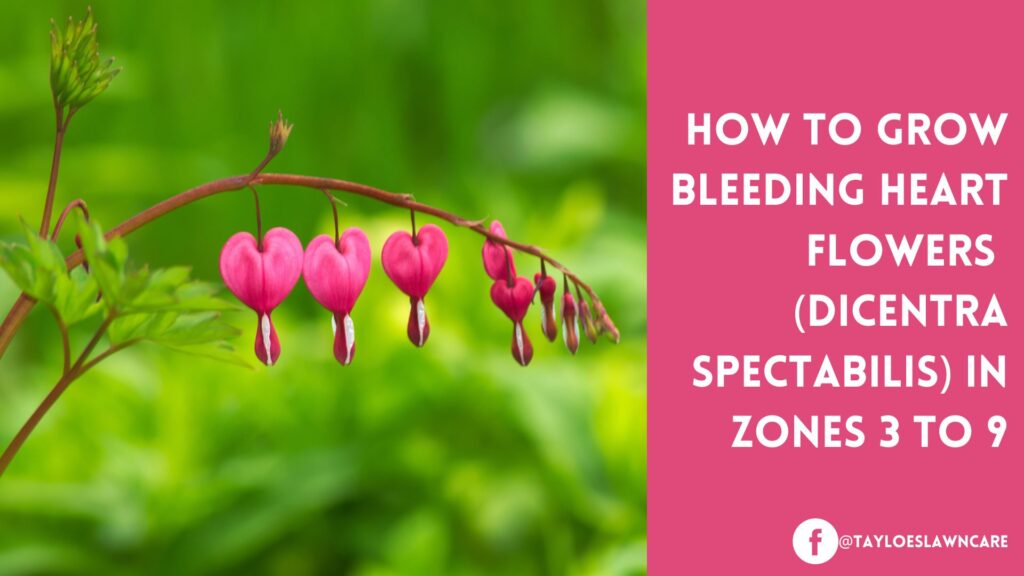Last Updated on: 30th December 2025, 04:42 pm
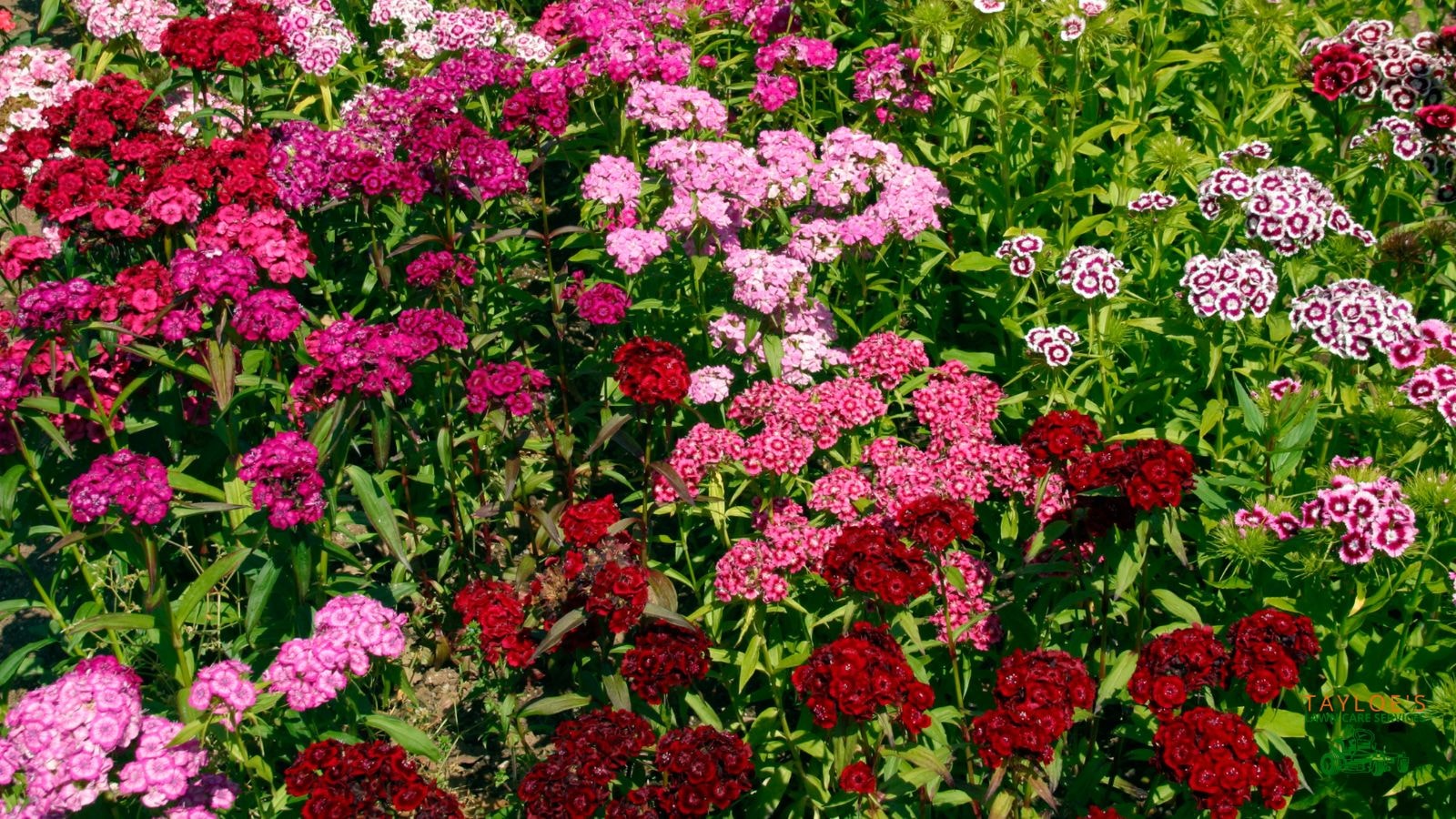
Here’s why so many love to grow perennial Dianthus plants.
There’s something undeniably charming about Dianthus flowers. With their delicate, ruffled blooms and delightful fragrance, these perennial favorites are a must-have for any garden enthusiast.
Whether you’re an experienced gardener or just starting, Dianthus offers a variety of species that can add vibrant color and texture. From the popular Sweet William to the classic carnation, these plants are known for their versatility, low maintenance, and long blooming season.
Let’s explore why Dianthus has captured the hearts of so many gardeners and how you can grow them in your own garden.
Why Grow Dianthus?
Dianthus flowers bring more than just beauty to your garden—they offer an array of benefits that make them a standout choice. Their fragrant blooms not only attract beneficial pollinators like bees and butterflies, but they also deter some pests, making them a fantastic companion plant.
Plus, with their ability to thrive in various climates and soil types, these plants are both a resilient and visually stunning addition to any garden landscape.
What is Dianthus?
Dianthus is a diverse genus of flowering plants that includes over 300 species, commonly known as pinks, carnations, and sweet Williams. They are celebrated for their beautifully fragrant, showy flowers and their attractive blue-green foliage.
With a reputation for being both a garden staple and a florist’s favorite, Dianthus flowers are a popular choice for borders and cut-flower arrangements.
Types of Dianthus
The beauty of Dianthus lies in its wide variety, catering to diverse gardening needs and preferences.
Planting them can mean adding low-growing varieties ideal for rock gardens or opting for taller types that create striking vertical interest in your garden. Depending on the species, Dianthus can be annuals, biennials, or perennials, providing you with a range of options for different planting schemes and design aesthetics.
One popular choice is the pink dianthus, a versatile plant known for its vibrant blooms and ability to thrive in various conditions. Many call pink dianthus “pinks” because of their fringed or “pinked” petals. With their blue-green foliage and delicate, spicy fragrance, they can range from just a few inches tall to over a foot, depending on the variety. If you’re seeking a low-maintenance option, short-lived perennial dianthus varieties like cottage pink or maiden pinks are excellent choices, offering repeated blooms with minimal care.
Dianthus plants come in a broad spectrum of sizes, shapes, and colors. Some varieties feature single blooms, while others boast double or even semi-double flowers. The bloom colors vary from pure whites and soft pinks to deep reds and purples, with some varieties even showcasing bi-colored patterns. The spicy scent or spicy fragrance of many of these blooms adds an additional layer of sensory appeal to any garden space.
In terms of growth habits, Dianthus can range from compact, low-growing groundcovers that spread gracefully across the soil surface to taller, more upright forms that can reach several inches tall. If you’re looking to fill out a space, varieties like Dianthus gratianopolitanus are ideal, as they provide excellent coverage and a dense mat of evergreen foliage. Their spread makes them perfect for use as companion plants alongside other perennials and annuals.
Most varieties thrive in full sun, but some, like cheddar pinks, can also tolerate partial shade. This adaptability makes them suitable for a range of garden conditions, from sunny borders to partially shaded areas. Their preference for well-draining soil ensures they perform best in gardens with good drainage.
For those interested in fragrant gardens, varieties like Dianthus plumarius and dianthus superbus are noteworthy for their spicy scent and appeal as called pinks. Their unique bloom shapes and fragrant qualities make them stand out in both garden settings and floral arrangements.
Choosing the Right Dianthus Variety
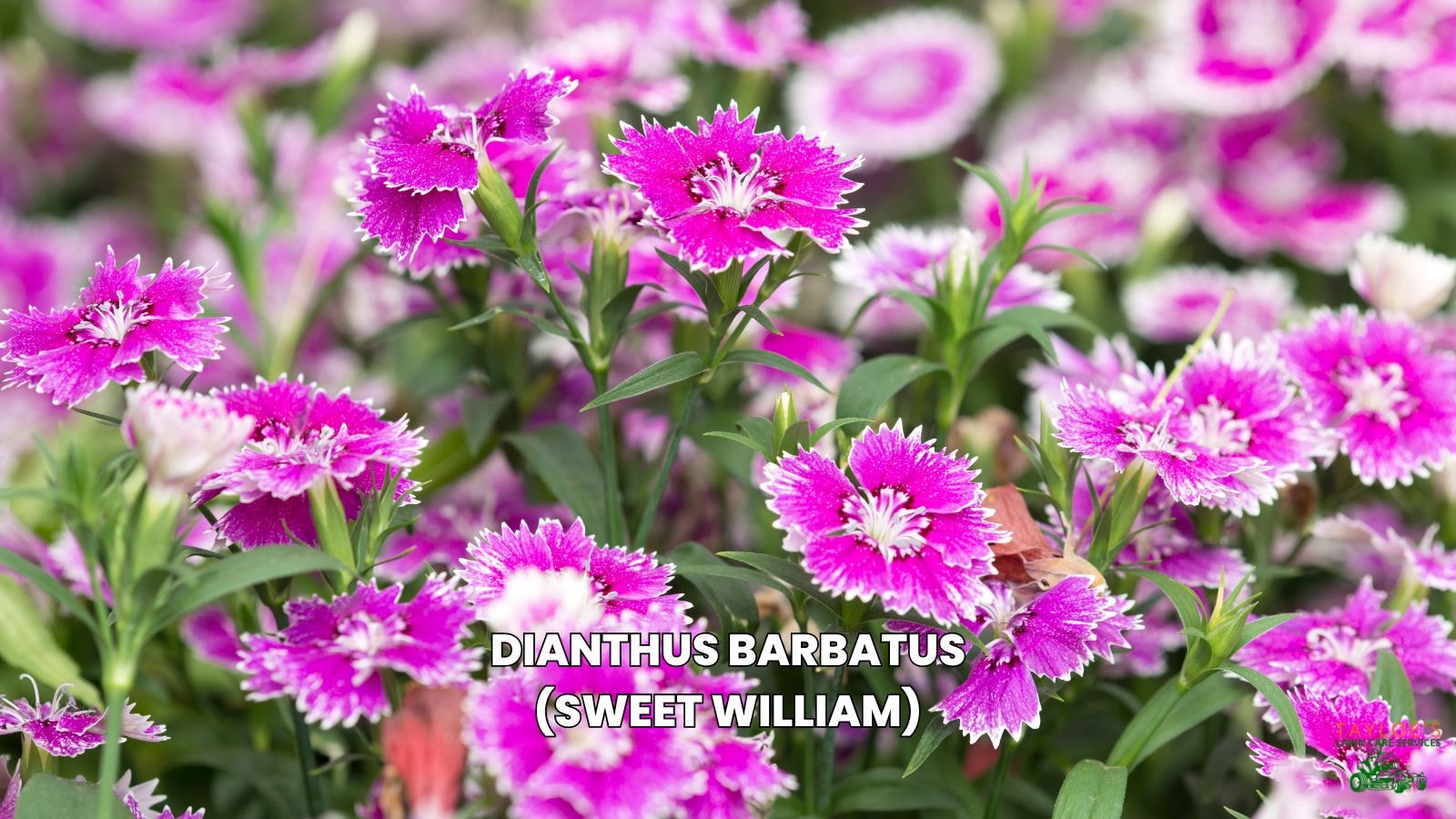
Notable Dianthus Varieties:
Sweet William (Dianthus barbatus): A biennial or short-lived perennial known for its charming, fragrant, and colorful blooms. It adds a vintage feel to any garden setting.
Carnations (Dianthus caryophyllus): Renowned for their long-lasting and fragrant flowers, carnations are a staple in cut-flower arrangements and add a classic touch to gardens.
Dianthus chinensis: This compact, low-growing perennial is perfect for edging or containers, offering a burst of pink, white, or red flowers that thrive in a sunny spot.
Perennial Dianthus (Dianthus gratianopolitanus): Known for its low-maintenance needs and vibrant, ruffled blooms, this variety is ideal for rock gardens and perennial borders.
Considerations for Selection:
When choosing the right Dianthus for your garden, consider the amount of sunlight and shade your garden receives, your climate, and your soil type.
Additionally, think about the growth habit and size of the plant to ensure it complements your garden’s design and existing plantings.
Ready to Grow Dianthus Plants?
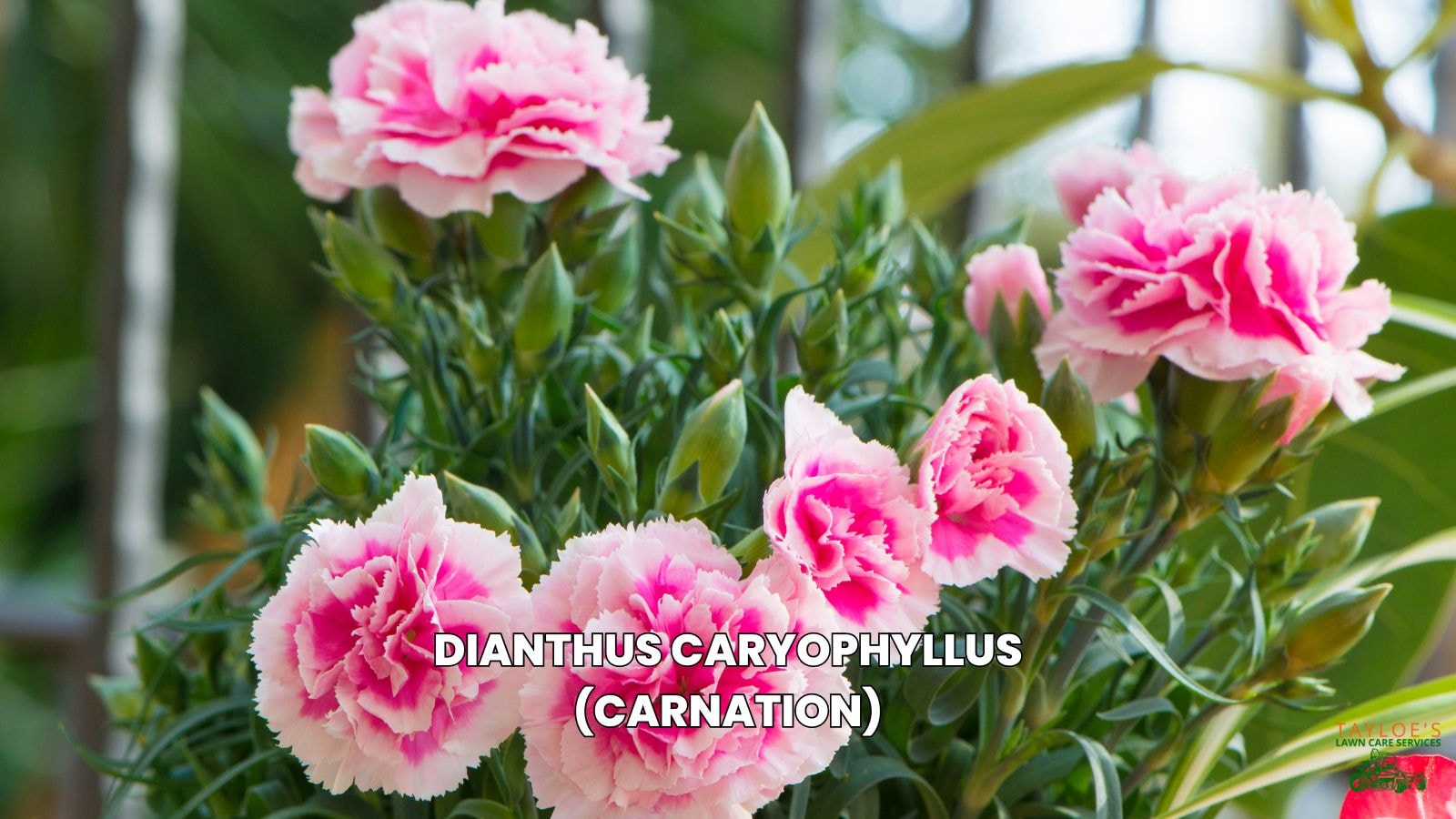
When to Plant:
For best results, plant Dianthus in early spring, after the last frost has passed. Early spring planting allows the roots to establish before the hot summer months. Planting Dianthus is possible in regions with milder winters in the fall. Ahem – I’m looking at you NC friends. You’ll give the plants a head start in the growing season.
Dianthus varieties, including Dianthus chinensis and Sweet William, prefer well-draining soil with a slightly alkaline pH to thrive.
Some varieties like cheddar pinks and alpine pinks, are especially resilient and can tolerate a spring frost and even a light frost. Dianthus varieties range, so consider one that suits different climates and garden designs.
How to Plant Perennial Dianthus:
Before planting, prepare your garden by loosening the soil to a depth of 12-18 inches to encourage deep rooting. This step is crucial, especially for species like Dianthus armeria, which need space to develop their root systems properly.
Space plants such as sweet william and maiden pinks about 12-18 inches apart to allow for proper air circulation and growth.
When you plant dianthus, ensure that the soil line is at the same level as the surrounding soil to avoid water pooling around the base, which can cause root rot.
After planting, water thoroughly to settle the soil around the roots, but avoid overly wet soil. This helps the roots to be established more effectively and reduces the risk of diseases.
For a strong start, apply a balanced fertilizer in the spring, such as a 10-10-10 or 20-20-20 mix, to provide essential nutrients. This step is particularly important for varieties like garden pinks and cottage pinks, which are known for their highly fragrant flowers and require a nutrient-rich environment to bloom prolifically.
Soil and Fertilizer Requirements:
Dianthus thrives in conditions with a pH typically between 6.0 and 7.0. It’s essential to use a well-drained soil to prevent waterlogging, which can lead to root rot—a common issue for Dianthus.
Adding organic matter such as compost or aged manure can improve soil structure and fertility. In early spring, a light application of balanced fertilizer will promote vigorous growth. Avoid over-fertilizing, as this can result in excessive foliage at the expense of more blooms.
Caring for Dianthus
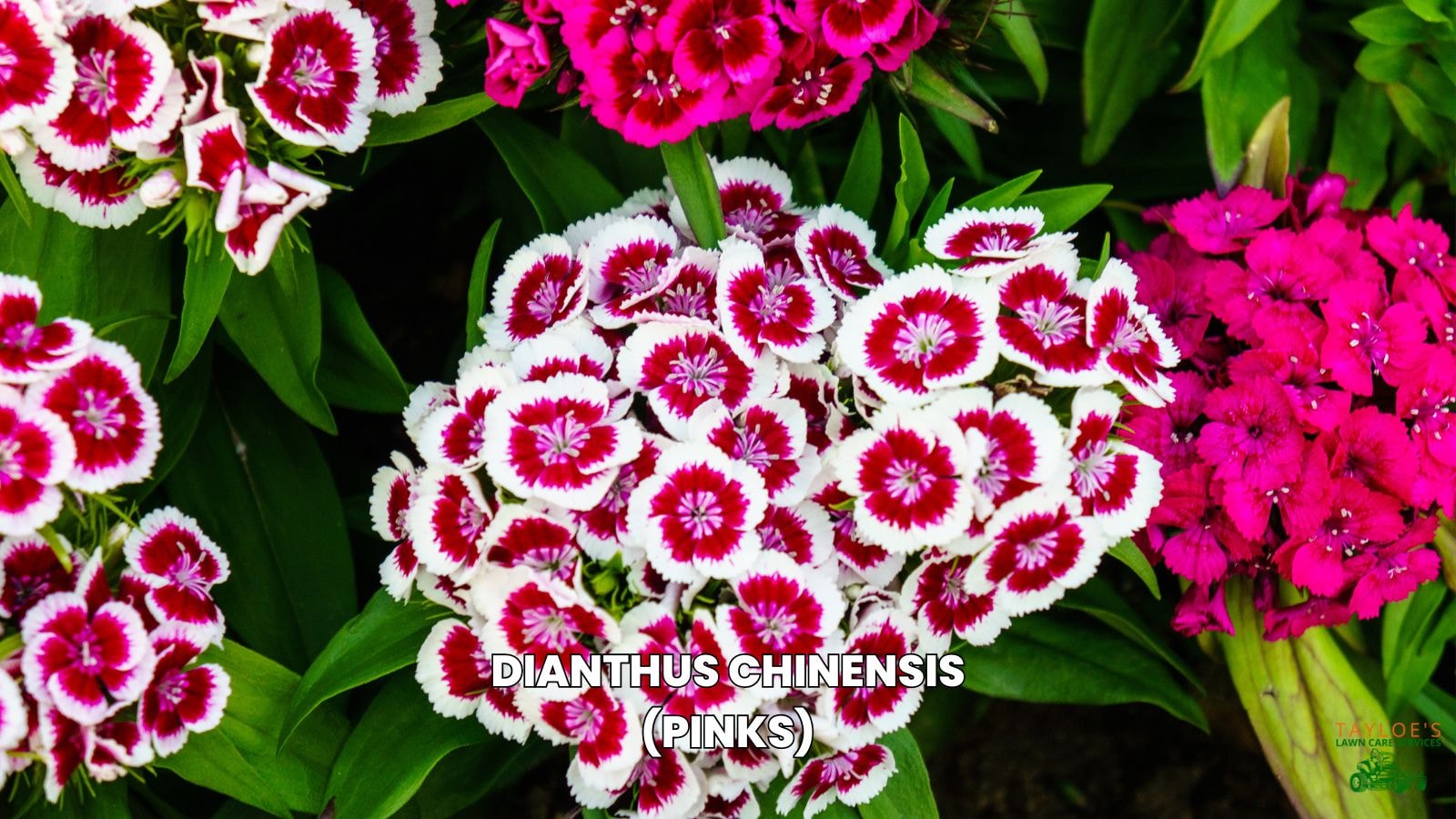
Water and Light Requirements:
Dianthus flowers, including varieties like Sweet William flowers and Chinese pinks, thrive best in full sun to afternoon shade, depending on the specific type.
While they are relatively drought-tolerant, regular watering is essential during the initial growth phase to establish strong roots. Consistent moisture is key, especially for short-lived perennial types like grass pinks and bedding plants. They are prone to drying out. Just be careful not to overwater.
Pruning and Deadheading:
Regular deadheading of spent blooms is vital for encouraging repeat blooms and preventing self-seeding. Pruning also helps maintain the shape of the plant and stimulates new growth.
In early summer, prune Dianthus plants to remove old or dead foliage, which helps prevent disease and promotes healthier plants. This practice is especially beneficial for plants with grass-like foliage.
Propagation:
To propagate dianthus, use stem cuttings, division, or seed.
Stem cuttings are best taken in late spring or early summer when the plants are actively growing. Dip the cut ends in rooting hormone before planting them in a mix of sand and potting soil.
Division can be done in early spring or fall to create new plants from mature clumps. Varieties like cheddar pinks and alpine pinks respond well to propagation by division, enhancing their spread in the garden.
Common Problems and Pests
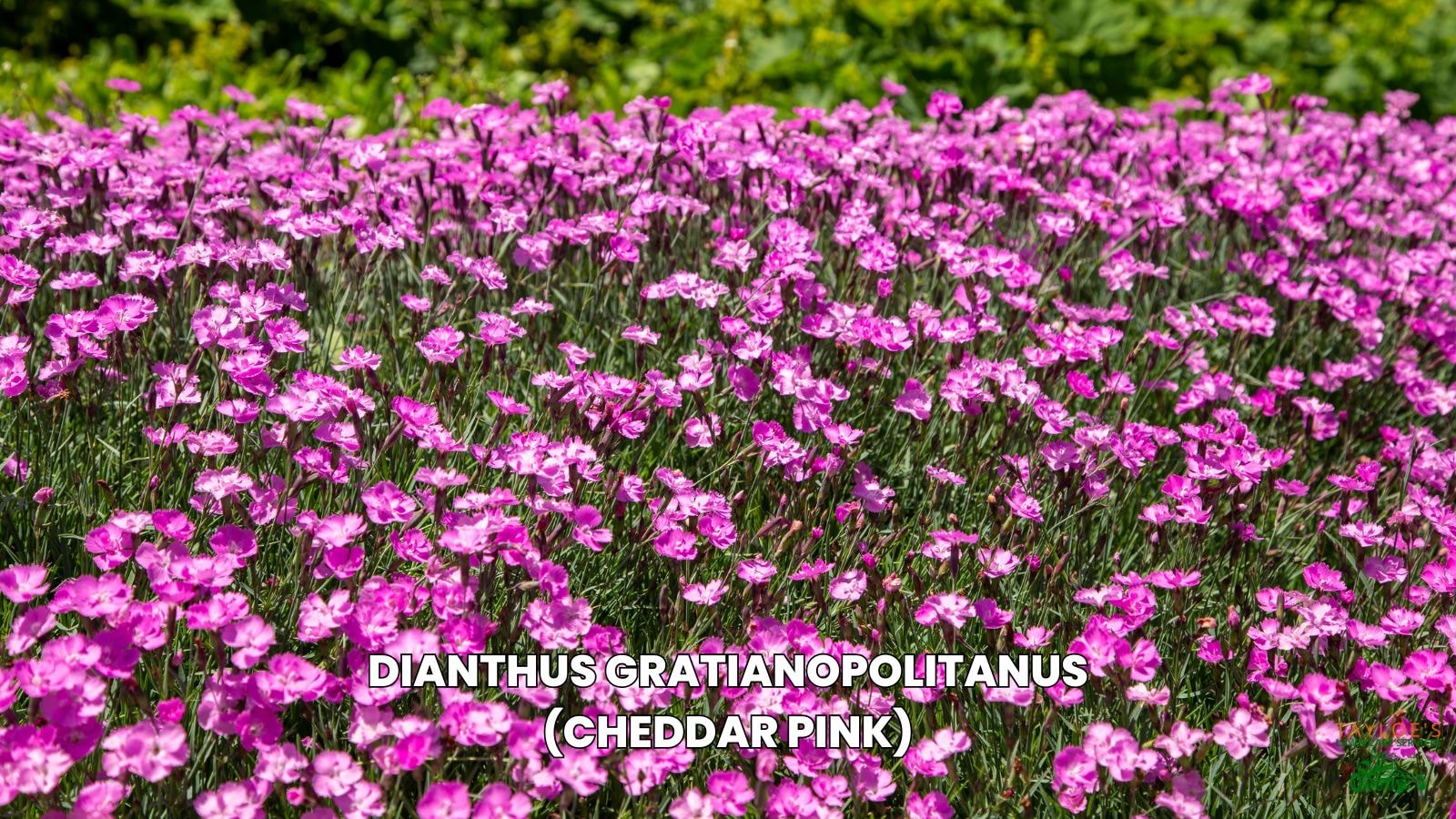
Diseases:
Dianthus is susceptible to diseases like root rot, crown rot, and stem rot. These often come from poor soil drainage or excessive moisture. So ensure good air circulation, plant them in well-drained or sandy soil, and avoid overwatering.
Pests:
Common pests include aphids, slugs, and snails, which can damage foliage and flowers. To keep these pests at bay, regularly inspect your plants and use organic or chemical controls as needed.
Planting Dianthus
Preparing the Soil:
For perennial varieties, sweet william and cheddar pinks, prepare the soil by incorporating organic matter to improve fertility and drainage. Loosen the soil to a depth of 12-18 inches and amend it with compost or well-rotted manure. This preparation ensures a healthy environment for the roots to grow deeply, enhancing plant stability and bloom production.
Planting and Caring for Perennial Dianthus:
Plant perennial Dianthus varieties in well-draining soil with the appropriate pH level. Water regularly to keep the soil evenly moist, especially during dry periods.
Apply a balanced fertilizer in the spring to support robust growth.
Remove spent flowers to keep the plants tidy and encourage more abundant flowering.
Using Dianthus in Garden Design
Companion Planting:
Pair Dianthus with other flowers with similar growing requirements, like roses and lavender, to create harmonious and visually appealing gardens. Dianthus also makes a lovely border plant or container flower, adding color and fragrance throughout the growing season.
Garden Design Ideas:
Incorporate Dianthus into a cottage garden or rock garden to bring a touch of elegance and old-world charm. They also look beautiful in containers or window boxes, providing color and fragrance to patios and balconies.
Dianthus in Cut-Flower Arrangements
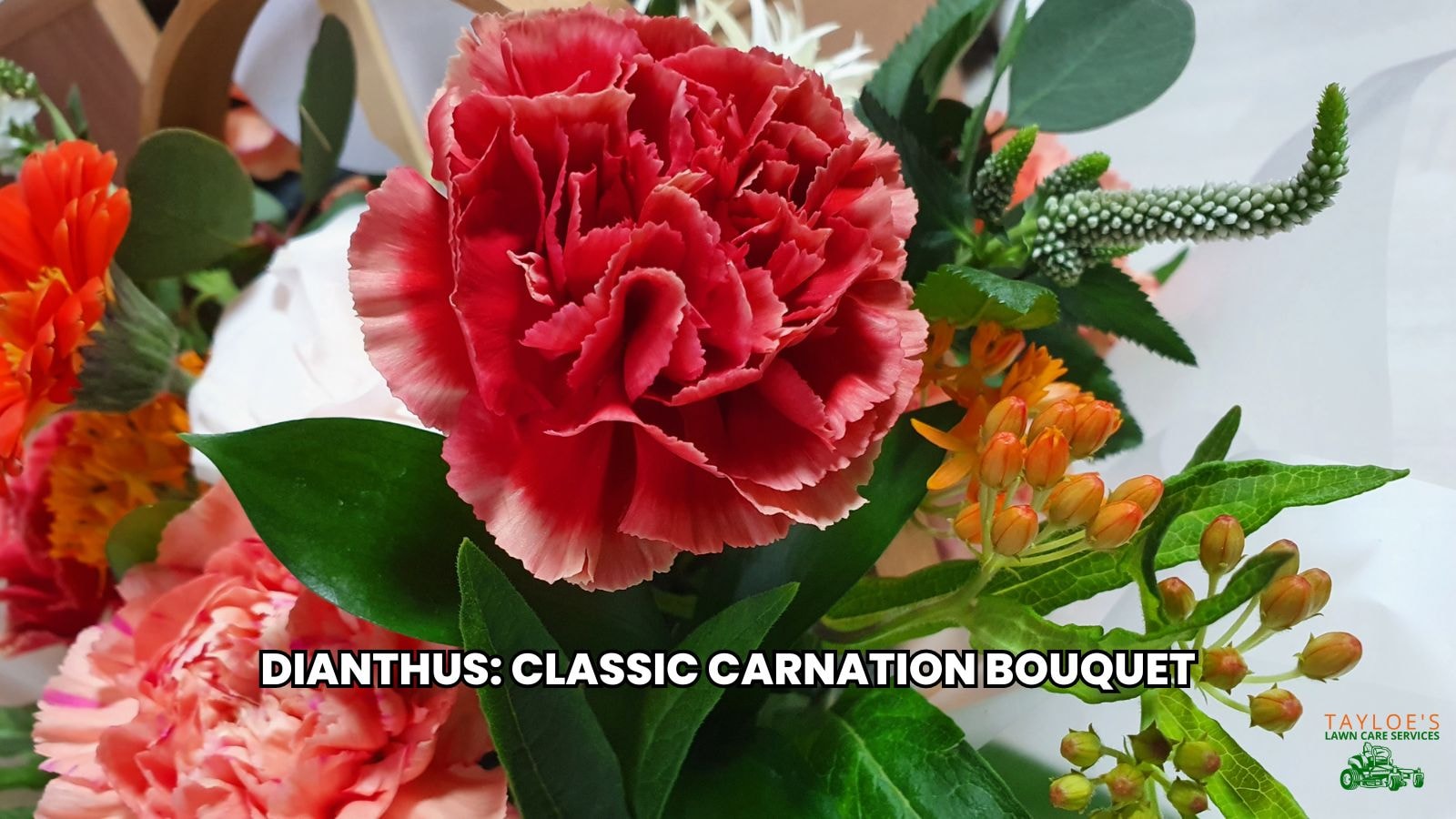
Harvesting Dianthus:
Harvest flowers in the morning when the dew is fresh for the longest-lasting blooms. Cut the stems at an angle and remove any lower leaves to prevent them from sitting in water.
Arranging Flowers:
Dianthus are perfect for cut-flower arrangements, offering vibrant color, fragrance, and texture. Combine them with other garden favorites, such as roses and carnations, for a stunning display.
Related Reading:
The Dianthus Genus Adds Colorful Blooms to Your Garden Beds
Dianthus is a versatile, low-maintenance flower that thrives in a variety of conditions.
By choosing the right variety for your garden and planting it in well-draining soil with a slightly alkaline soil pH, you’ll enjoy these beautiful blooms for years. Regular watering, spring fertilization, and deadheading will encourage continuous blooming. Their fragrant flowers and foliage enhance both garden design and cut-flower arrangements.
Add Dianthus to your garden today and enjoy a splash of color and a delightful scent throughout the season.
Author Profile

- Maureen Abuor
- Maureen Abuor is a professional content marketing strategist and SEO strategist, with particular knowlege of creating landscaping and gardening content that informs and delights her audience. When she's not working, she's a busy mother of three precious little ones and child of God.
Latest entries
 Lawn CareApril 29, 2025Best shady area grass seed for Eastern NC
Lawn CareApril 29, 2025Best shady area grass seed for Eastern NC GardeningApril 15, 2025How do I make organic soil for the garden?
GardeningApril 15, 2025How do I make organic soil for the garden? Flower GardenMarch 7, 2025What are wave petunias?
Flower GardenMarch 7, 2025What are wave petunias? Flower GardenMarch 3, 202520 Full-sun annuals for your spring and summer garden
Flower GardenMarch 3, 202520 Full-sun annuals for your spring and summer garden





